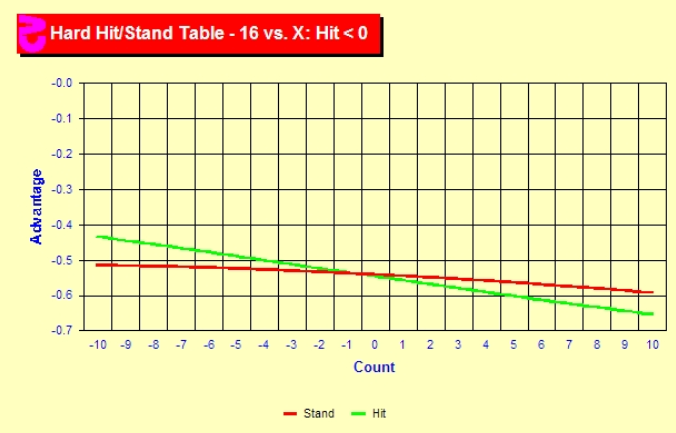- Get link
- X
- Other Apps
In blackjack, you have three basic options. You can hit, stand, or double down. There is a fourth option that comes into play if you have a pair, which is to split. But every once in a while you will come across a fifth option at certain casinos. The option to surrender.
When you surrender, you get 50% of your bet back immediately. This might sound like a raw deal, but it is right if you have one of the worst possible situations, like hard 16 vs T.
Basic Strategy Late Surrenders
For a soft seventeen-shoe game here are the proper basic strategy late surrenders.
16 vs A, T, 9
15 vs T
In an H17 game, we can add in 15 v A and 17 v A. Note these are all hard totals, you do not surrender any soft hands.
Higher EV, Lower Variance
Surrender is actually a fantastic rule. It is good for smart players because it allows you to make a higher EV choice vs playing one of the above situations out. It is also good for casinos, because few players actually know how to use it properly, and the cost of surrendering a hand where they should play it out can be high. While theoretically blackjack has a house edge of 0.5%, in reality, most players make a lot of basic strategy mistakes which increases the rate at which they lose.
Surrender also decreases your variance. The outcome of the hand is certain. What's more, 16 v T or any of the other stiffs you would surrender are high-variance hands. You're going to win only about 23% of the time, and more in high counts. So it is easy to go 3 or 4 of these situations in a row without winning a hand. With surrender, your EV is higher, AND you get a guaranteed return on every hand. No variance attached.
Early vs Late Surrender
The distinction between early and late surrender is whether you can surrender before or after the dealer checks for blackjack. In America, late surrender is more common, when the option exists at all. Overseas, early surrender is often paired with ENHC.
Early surrender is much, much more powerful. One way of comparing these is to look at the impact on the basic strategy.
Late surrender offers a player advantage of 0.1% (this comes almost entirely from surrender against the ten, incidentally).
Early surrender against the ten offers a player advantage of 0.24%
Early surrender against the ace offers a player advantage of 0.39%
So you see, for the basic strategist ES outperforms LS by about 600%. In fact, full early surrender is so powerful that if a game has it, the player has an off the top advantgage.
The impact on a card counter is even stronger. The result of playing in an ES10 game is that you can move your bet spread up a notch. So what you would be betting at TC 3 you can now bet at TC 2. This is because the player advantage increases much faster with ES10 in play, even if the initial house advantage is the same. This is because at high counts when you are betting the most money, the EV of surrender goes up substantially. Below is a chart that shows the expected return of 16 v T by true count for both stand and hit. Note that as the count increases stand becomes more profitable, but they both trend downwards. The EV of surrender is of course stagnant at -0.5
Tricky Surrender Reverse Index
Normally, as the above chart indicates, as the count increases we become more interested in surrendering. Or to rephrase it, the other options get progressively worse as the count increases. However, with 17 v A in a H17 game, you have the opposite effect. Initially we want to surrender, but as the count increases above +1 we actually want to stay. This is called a reverse index, where the index operates unusually. The reason is because of the unique properties of the ace, specifically that it can be either 1 or 11. A deck rich in tens is actually good for you in this scenario because they limit the dealer's ability to keep hitting until they have a hand that beats you.
Business As Unusual
Sometimes surrender can pay off in a big way. I was playing heads up in the high limit room in Calgary, and the dealer thought I wanted a hit on my first hand. He was about halfway through dealing the card when he realized I had waved indicating I wanted to stay, so he placed it back in front of the shoe. But I had already seen it. It was an ace. So I quickly surrendered both of my hands, and then placed a large wager on the next one, guaranteeing myself an ace as my first card and a > 40% advantage. If I had just stayed, the dealer might have had to hit and eat up my ace.
Sometimes Discretion is The Better Part of Valor
Surrender is a powerful tool in the right hands. Make sure that you study your basic strategy surrenders and your surrender indexes in order to maximize your win-rate and make the worst out of some lousy situations. And if you find a game with full early surrender, call me collect!
- Get link
- X
- Other Apps


Comments
Post a Comment